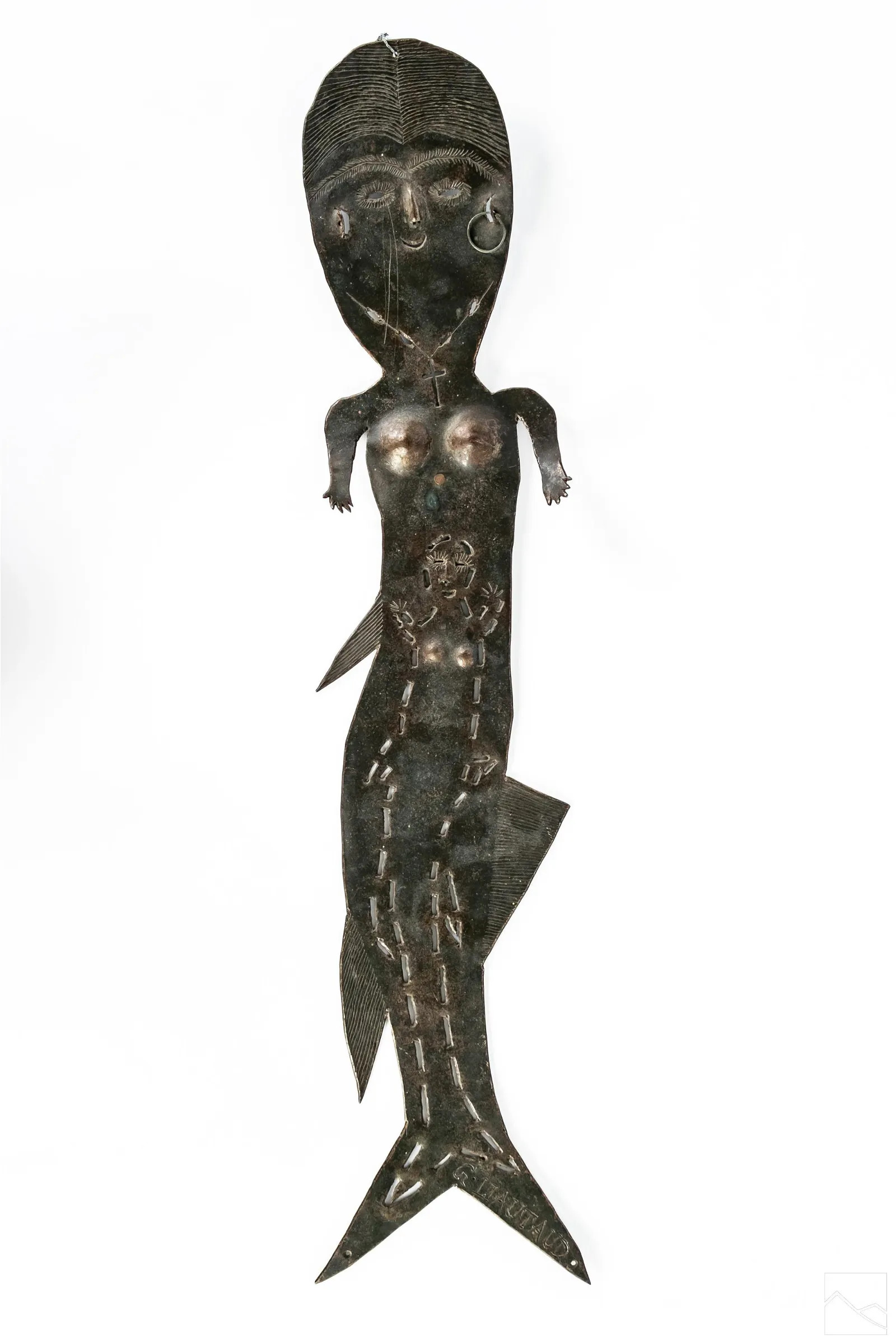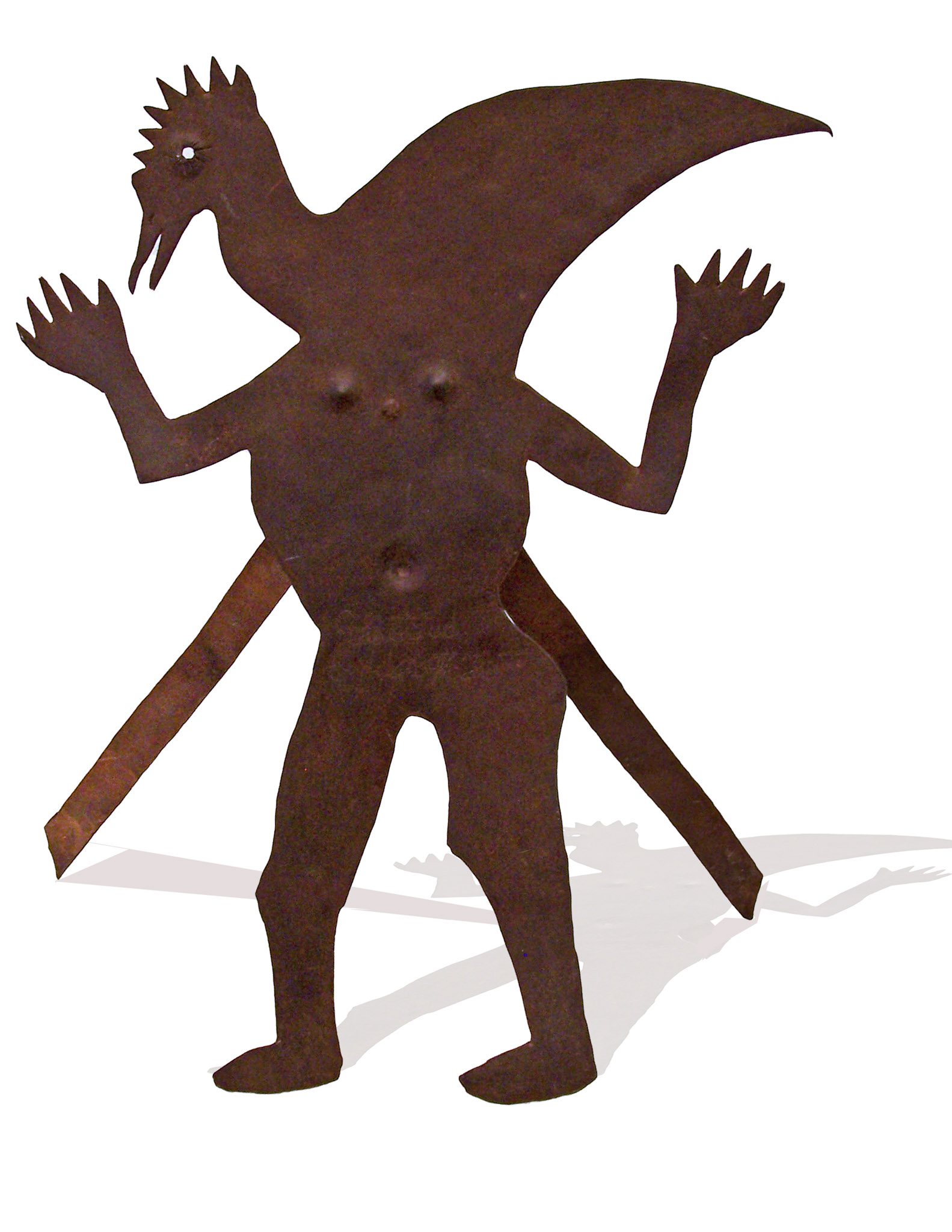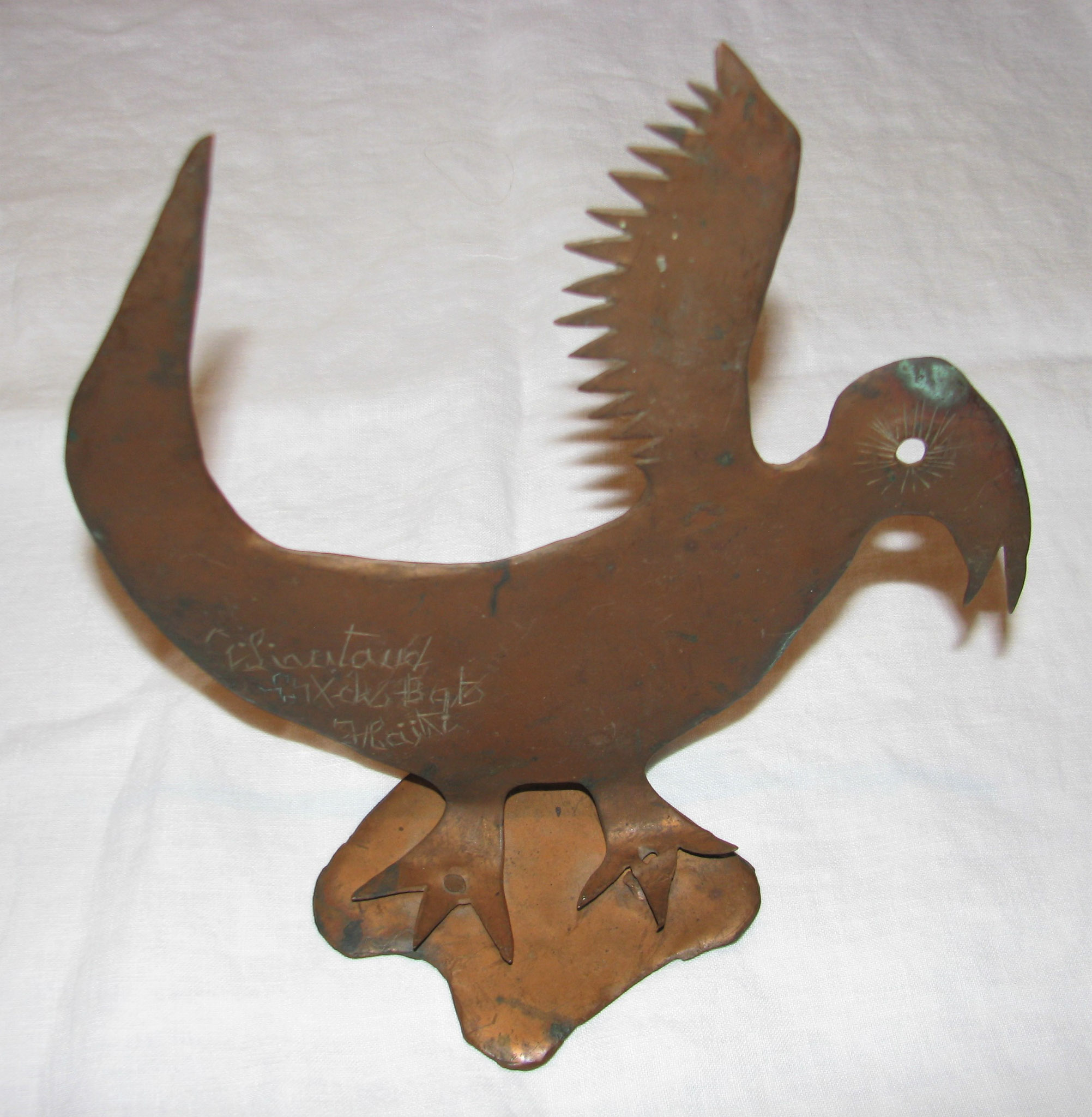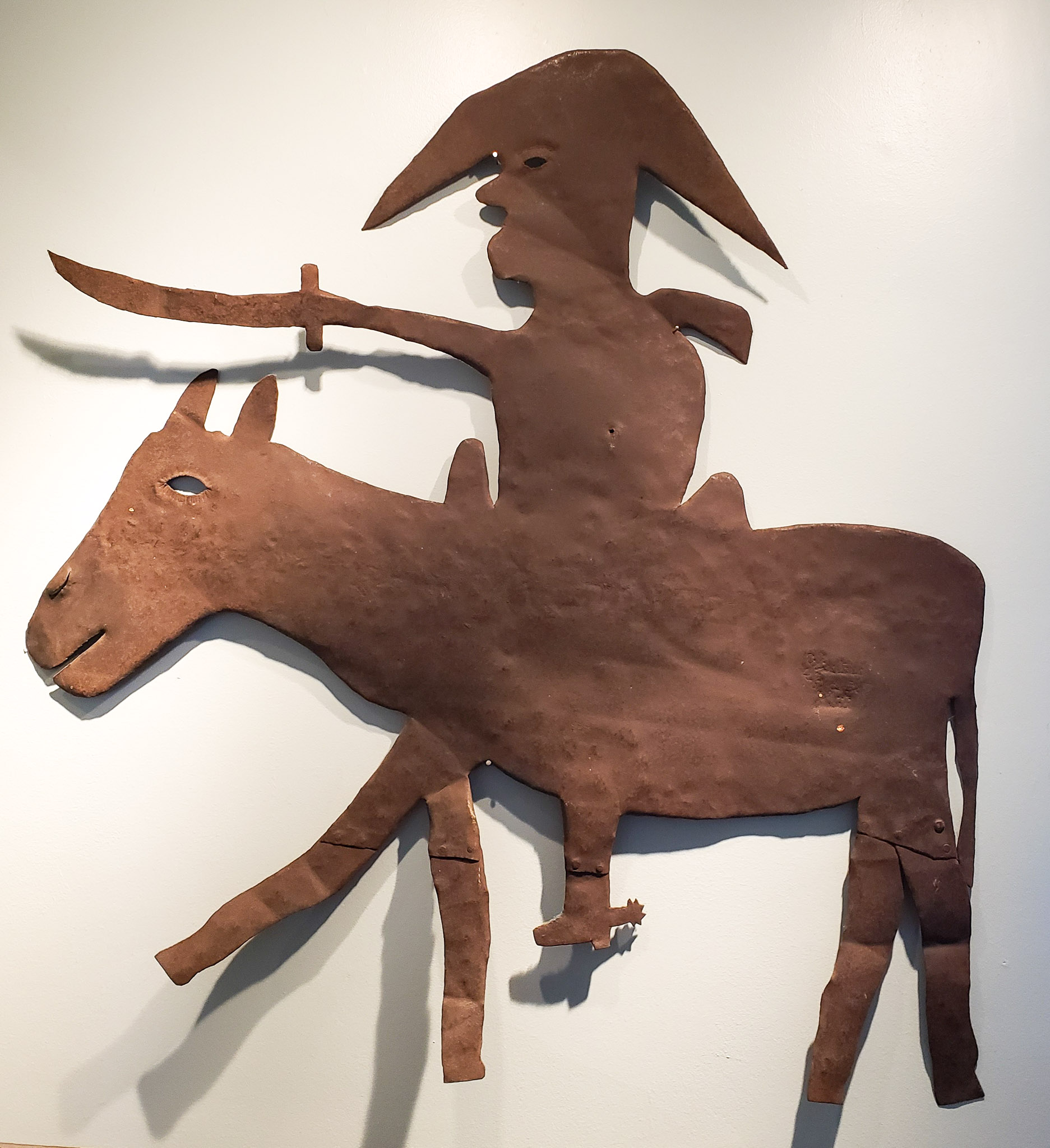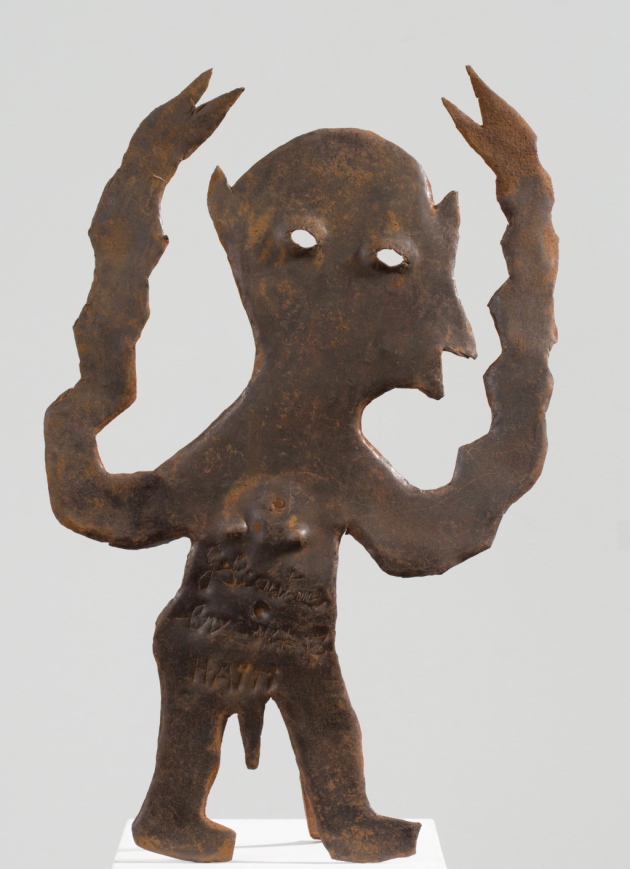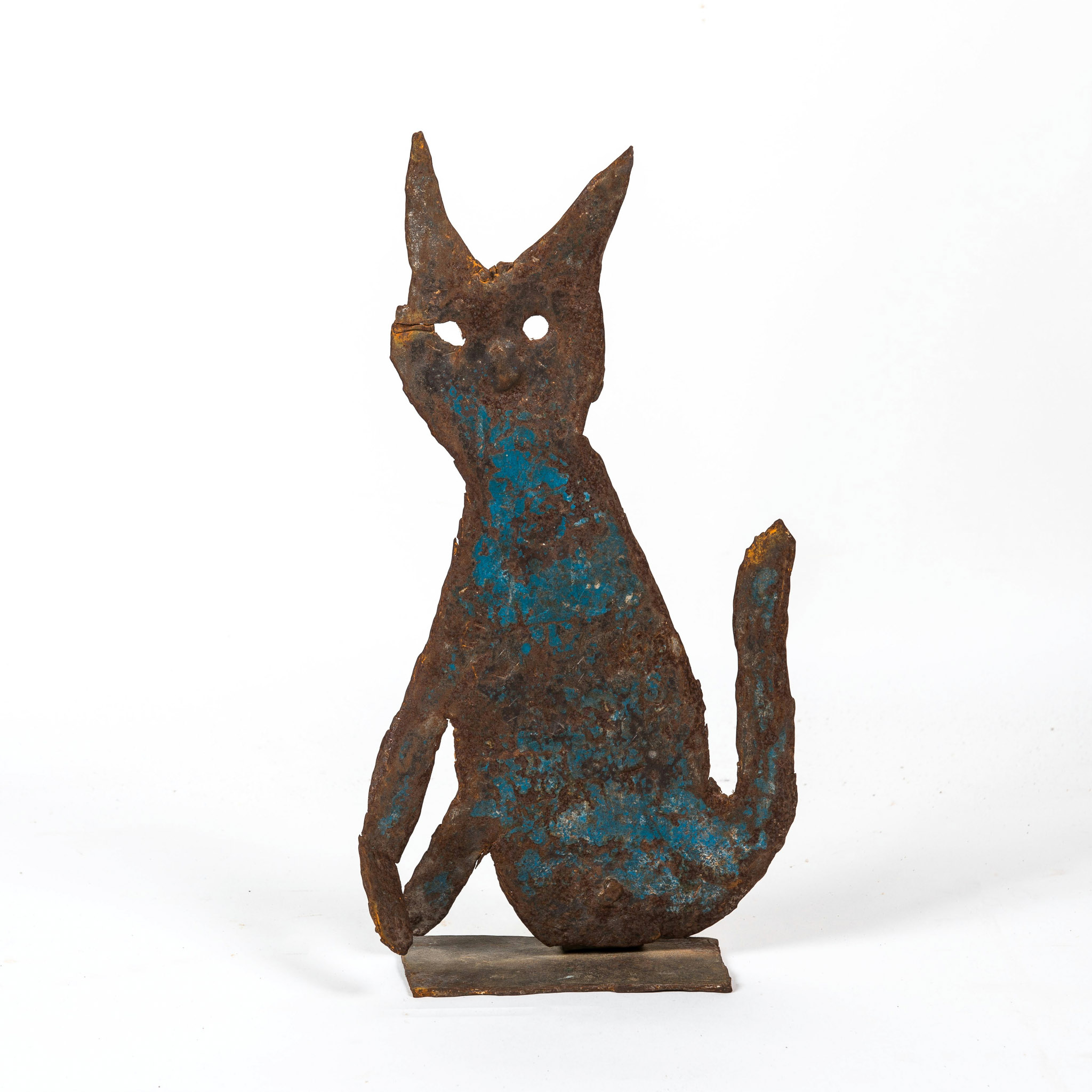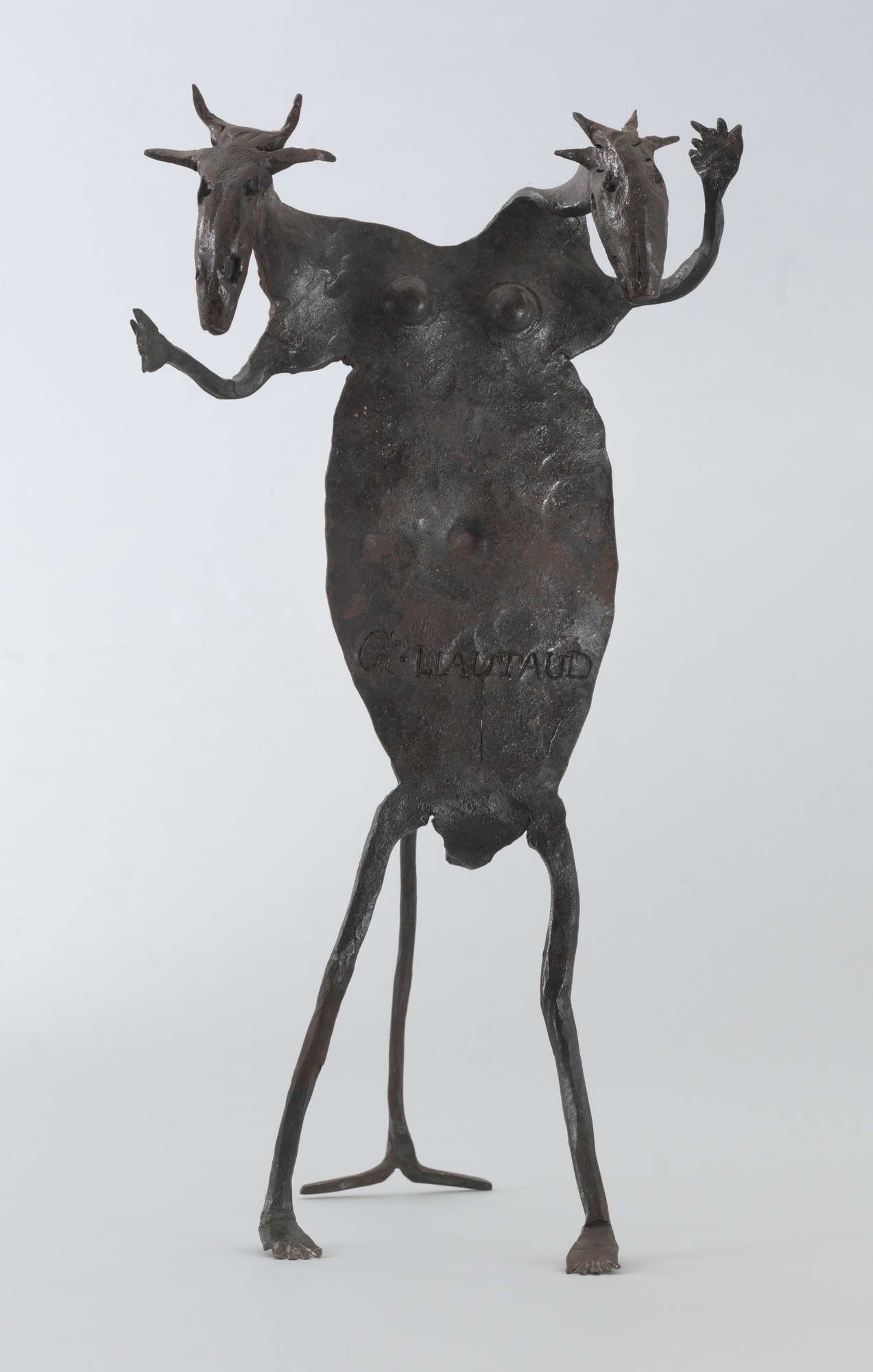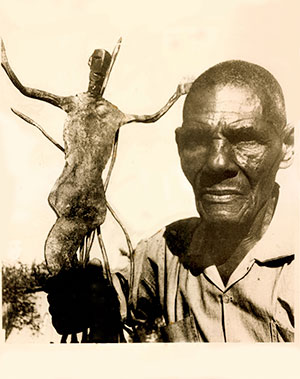
George Liautaud with sculpture
Georges
LIAUTAUD was born in Croix des Bouquets in 1899. He studied in Port-au-Prince
and then worked at the Haitian-American Sugar Company (HASCO) where he repaired
the train tracks for the sugar industry.
In the 1940s, he opened his own forge where he fabricated
mechanical parts as well as crosses for the cemetery. DeWitt Peters discovered
him in 1953 and encouraged him to dedicate himself to sculpture. Thus, it was
Georges Liautaud who gave birth to a new movement of metal sculpture. Honored
by famous art critics such as André Malraux, Selden Rodman and Jean-Marie Drot,
Georges Liautaud, an emblematic figure of Haitian art, died at the age of 92 in
1992.
He was a part of the famous exhibit “Les Magiciens de la terre
(The Magicians of Earth)” and his works have been exhibited internationally in
places such as the Grand Palais, the Centre Pompidou, the Abbaye de Daoulas,
the Fowler Museum, the Brooklyn Museum, the Frost Museum, the Bass Museum, the
Halle Saint-Pierre and the Musée de Montparnasse. His work is part of the
permanent collections at the MoMA in New York, the Milwaukee Art Museum, the
Davenport Museum, the Waterloo Museum, the Huntington Museum of Art, the Figge
Art Museum, the Fond national d’art contemporain de France, the Musée national
d’art moderne de Paris, the Musée de l’OEA, Le Centre d’Art, the Musée d’Art
Haïtien du Collège Saint-Pierre and the Musée de Panthéon National Haïtien.
